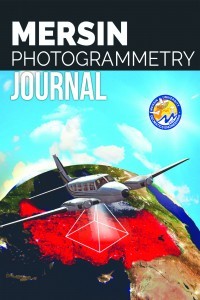Documenting historic tileworks using smartphone-based photogrammetry
Documenting historic tileworks using smartphone-based photogrammetry
Smartphone, Documentation, Photogrammetry, Tile paintings Ḥāfeẓ tomb,
___
- Ebrahim M (2004). Using Mobile Phone Digital Cameras in Digital Close Range Photogrammetry. The Photogrammetric Journal of Finland, 19(1), 11-22.
- El-Ashmawy K L A (2017). Using smart phones for deformations measurements of structures. Geodesy and Cartography, 43(2), 66-72. doi:10.3846/20296991.2017.1330770
- Fawzy H E-D (2015). The accuracy of mobile phone camera instead of high resolution camera in digital close range photogrammetry. International Journal of Civil Engineering and Technology, 6(1), 76-85.
- Gruen A & Akca D (2007). Mobile Photogrammetry. Paper presented at the Dreiländertagung SGPBF, DGPF und OVG, ,, Muttenz, Switzerland.
- Hernán-Pérez A S, Domínguez M G, González C R & Martín A P (2013). Using IPhone Camera in Photomodeler for the 3D Survey of a Sculpture as Practice for Architecture's Students. Procedia Computer Science, 25, 345-347. doi:https://doi.org/10.1016/j.procs.2013.11.041
- Luhmann T, Robson S, Kyle S & Harley I A (2011). Close Range Photogrammetry: Principles, Techniques and Applications. Scotland, UK: Whittles Publishing.
- Quintero M S, Georgopoulos A, Stylianidis E, Lerma J L & Remondino F (2017). CIPA's Mission Digitally Documenting Cultural Heritage. APT Bulletin: The Journal of Preservation Technology, 48(4), 51-54. Retrieved from https://www-jstor-org.i.ezproxy.nypl.org/stable/26382567
- Sanz-Ablanedo E, Chandler J H, Rodríguez-Pérez J R & Ordóñez C (2018). Accuracy of Unmanned Aerial Vehicle (UAV) and SfM Photogrammetry Survey as a Function of the Number and Location of Ground Control Points Used. Remote Sensing, 10(10), 1606. Retrieved from https://www.mdpi.com/2072-4292/10/10/1606
- Schuhr W & Kanngieser E (1999). Single images in conservation. Paper presented at the CIPA Task Group 2; CIPA Symposium Olinda, Brazil.
- Schuhr W & Kanngieser E (2003). New perspectives for single images in conservation. Paper presented at the CIPA Task Group 2; CIPA Symposium, Antalya, Turkey.
- Shatnawi N & Obaidat M T (2019). Extraction of As-Built Drawings Using Cell Phone Camera. Jordan Journal of Civil Engineering, 13(1), 21-29.
- Stylianidis E (2020). Photogrammetric Survey for the Recording and Documentation of Historic Buildings. Switzerland: Springer.
- Takahashi Y & Chikatsu H (2009). Accuracy Aspects of Mobile Phone Cameras for Digital Close Range Photogrammetry. Journal of the Japan society of photogrammetry and remote sensing, 48(5), 299-307. doi:10.4287/jsprs.48.299
- Yayın Aralığı: Yılda 2 Sayı
- Başlangıç: 2019
- Yayıncı: Mersin Üniversitesi
Photogrammetric analysis of multispectral and thermal close-range images
Digital documentation of ancient stone carving in Şuayip City
Halil İbrahim ŞENOL, Nizar POLAT, Yunus KAYA, Abdulkadir MEMDUHOĞLU, Mustafa ULUKAVAK
Documenting historic tileworks using smartphone-based photogrammetry
Using photogrammetric modeling in reverse engineering applications: Damaged turbocharger example
